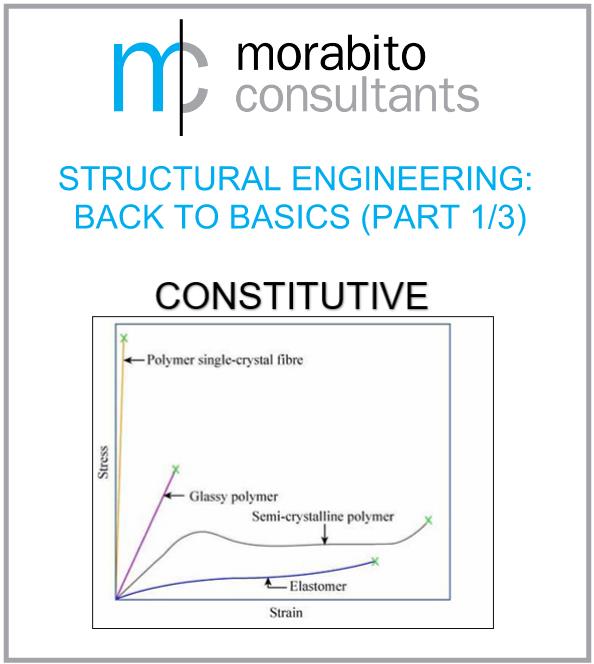Structural Engineering: Back to Basics (Part 1/3) | January 21, 2022

When mathematical problems in structural engineering become more complex or have a great deal of uncertainty in variables, it is important for engineers to go back to fundamental principles when considering potential solutions. Many problems that engineers encounter do not have pre-determined equations or step-by-step procedures for following in references or codes. At these times, it requires invoking our earliest training in mechanics of materials and other theoretical fundamentals. In order to analyze a structure, there are essentially three basic components of physics that need to be satisfied. In no particular order of importance, they are 1) Constitutive Properties 2) Equilibrium and 3) Compatibility. In today’s post we will cover Constitutive Properties.
Constitutive Properties involve utilizing the appropriate model (graph) for a given material’s relationship between stress (pressure) and strain (molecule movement within a mass). Some materials have constitutive properties such that there is a well-defined linear model that relates stress and strain; other materials such as hyper elastic and viscoelastic materials have very non-linear “curvy” stress-strain graphs. Some materials constitutive properties are highly sensitive to thermodynamics and change over the range of a few degrees in temperature. Using a poor constitutive model may result in the unconservative prediction of structural movement or non-brittle failure. It is important that materials used in structural design have had sufficient testing to have well-defined constitutive properties for engineers to assure their behavior can be adequately predicted.
We will be covering Equilibrium and Compatibility next week. Stay tuned!
